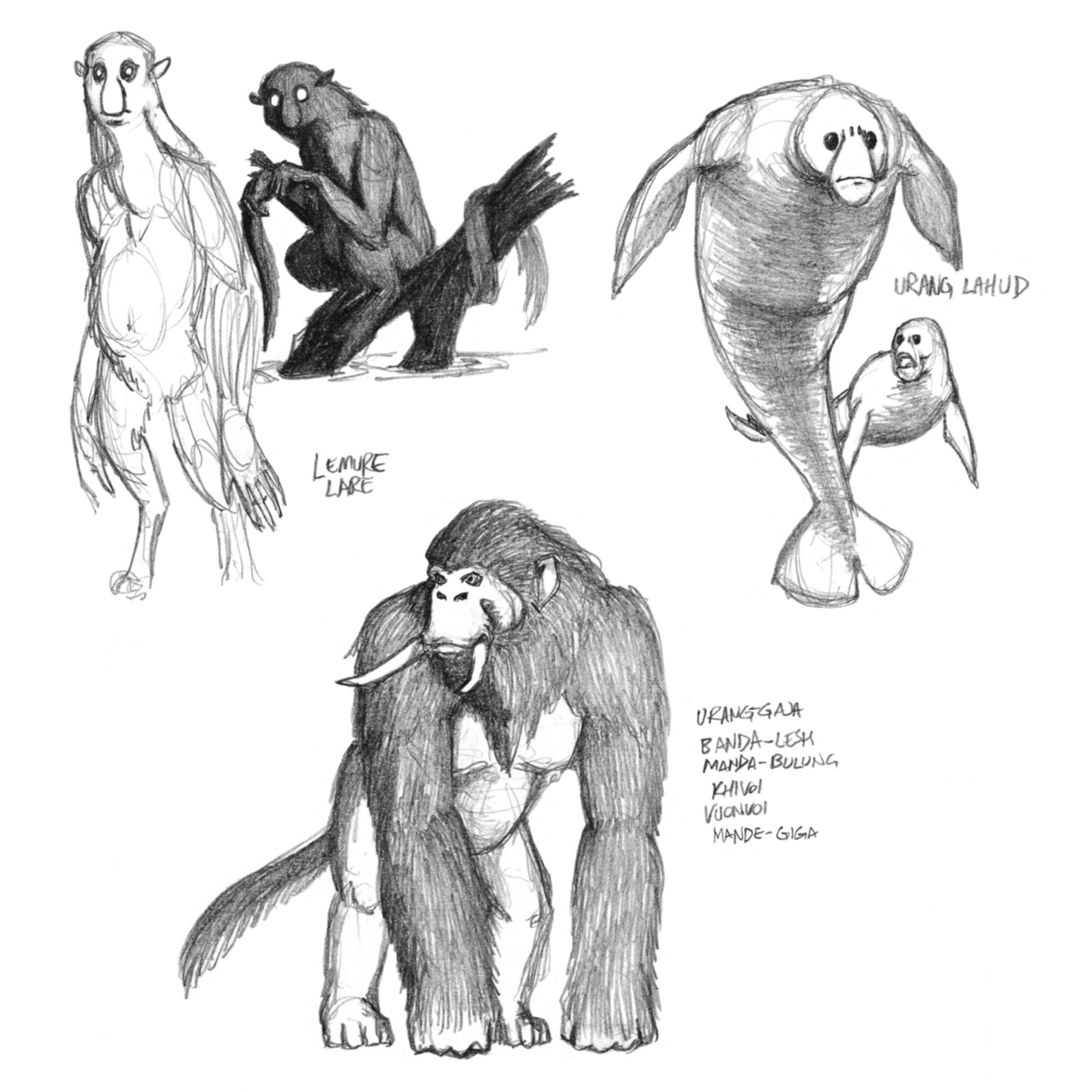HOME | DD
 Nyktomorphia — Primates of Rhonyonrood
by-nc-nd
Nyktomorphia — Primates of Rhonyonrood
by-nc-nd

#conceptart #creaturedesign #fantasyart #pencildrawing #sciencefantasy #worldbuilding #creatureart #cosmodesy #speculativeevolution #speculativebiology #primitivefantasy
Published: 2020-11-04 06:04:00 +0000 UTC; Views: 2853; Favourites: 53; Downloads: 0
Redirect to original
Description
Every world in Cosmodesy inhabited by panhumans also has other primates, and Rhonyonrood - where vast buoyant island-trees float in the currents of the planetary ocean - is no exception. In fact, it currently has more named primates than any other world, admittedly because it’s a primitivist fantasy setting so it kind of expects it.
- Above left: One minor point of interest is that on Rhonyonrood the aquatic ape hypothesis is fact - Rhonyonrood elves are mostly arboreal, but they retain many adaptations from ancestors that were built for diving and wading, which they share with their nearest living relatives. Lemures are excellent swimmers, with wide partly-webbed digits and able to hold their breath for an extended period of time, but there are more predators in the ocean than the trees. They mainly emerge to gather fruit and dive for fish at dawn and dusk, and otherwise hide away in secret group nests in the canopy. They are intelligent and wary, casting eerie, watchful silhouettes in the twilight, and many elven religions venerate them as ancestral spirits or messengers of fate.
- (Erratum: I got a little caught up in the drawing and forgot that, unlike proboscis monkeys, lemures are apes and don’t have tails.)
- Above right: Other aquatic apes never returned to the land, and instead fully adapted to life as marine mammals. Despite their docile appearance and playful behaviour, urang lahuds can be quite vicious if provoked, biting and battering anything that seems like it might get too close.
- The working name for it was a "merangutan". One of my friends threatened to disown me if I didn't change it.
- Below centre: The giant knuckle-walking monkeys are among the few “terrestrial” animals of Rhonyonrood which can’t also swim or fly and are merely passable at climbing, instead protecting themselves by simply being larger than any other species above the water - up to three metres high at the shoulder. Bandas are purely herbivorous, and seldom form nesting groups larger than two or three. Their tusks are mainly used as leverage tools to remove bark or debris, but also for sexual selection and (naturally) defense against predators - despite their size, their solitary grazing patterns make one a tempting target for a coordinated pack of pards.
You can also follow my posts on Tumblr , Twitter , and Instagram .



























